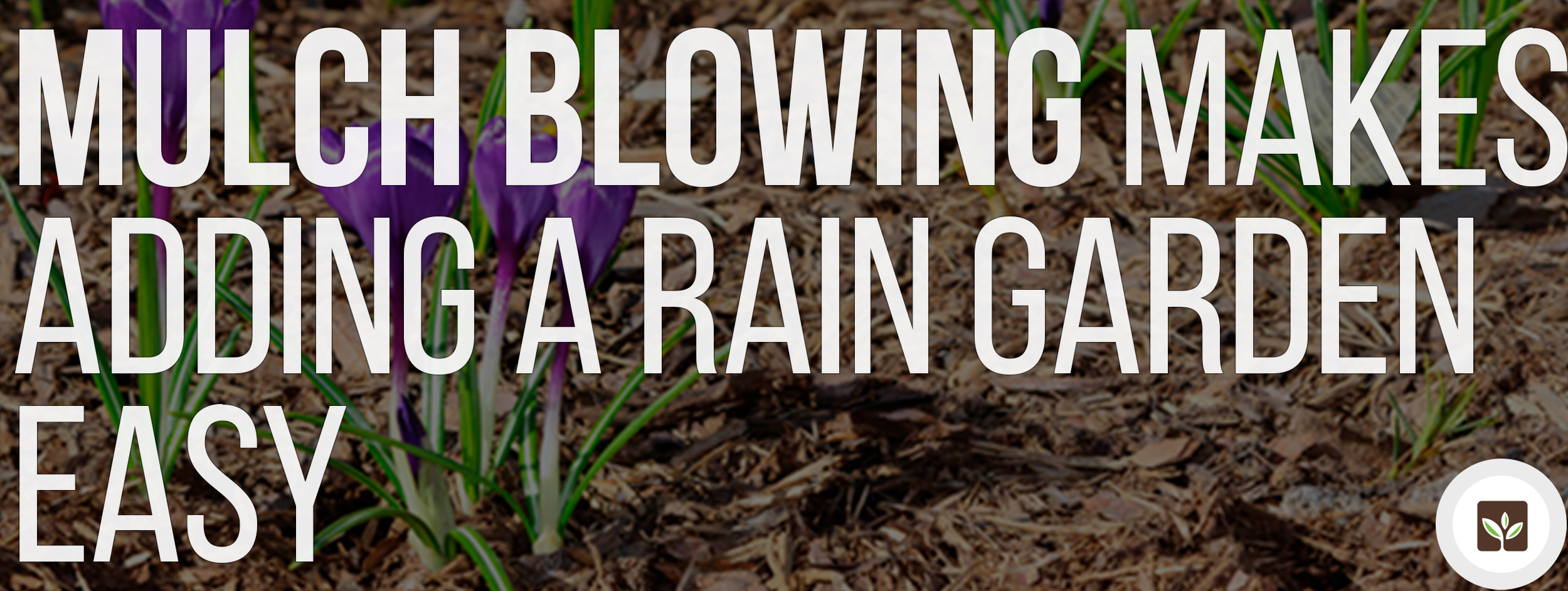
Mulch Blowing Makes Adding a Rain Garden Easy
Here in New Jersey, we’re fortunate to be surrounded by water. Rivers, streams, and the Atlantic Ocean make our state beautiful and help our businesses thrive. With this much water, however, we have a great responsibility to keep it healthy.
New Jersey has five watersheds and twenty watershed organizations spanning the state. Together, they work to protect New Jersey’s water from contamination and improve the quality of water throughout the state.
What can you do to improve water quality in your area? Consider adding a rain garden to your site. The Rutgers New Jersey Agricultural Experiment Station offers a full guide to planning and installing a rain garden. Keep reading to learn more about rain gardens and how using a professional mulch blowing company in New Jersey can help you create one on your site.
What is a rain garden?
A rain garden is a landscaped, shallow depression in the ground that captures rainwater and filters it. But rain gardens are more than drainage ditches or holding ponds. They are thoughtfully designed and landscaped so they look great as they work hard. They beautify spaces and improve the surrounding area by capturing pollutants before they reach our rivers and streams.
Where should I put a rain garden?
It’s important to carefully select the site for your rain garden. Generally, a rain garden should be between two impervious surfaces to capture and filter the water. For example, you could put a rain garden between your building and the street. Water running off the building’s roof could be filtered in the rain garden before going to the drain in the gutter.
How do I build a rain garden?
After determining the location and calculating the size and depth of the garden, test the soil on the site. Some sites require adding sand or other amendments to the soil to allow it to filter water effectively. Dig out the site and prepare the soil. Once the base of the garden is in place, install your plants and cover the entire garden with a layer of landscape mulch.
How much mulch is needed in a rain garden?
A rain garden needs to be covered with three inches of mulch. The mulch should cover all parts of the garden. This means that every 50 square feet of rain garden needs 0.5 cubic yards of mulch. Our expert mulch companies can help you calculate the exact amount of mulch you’ll need for your garden. With blown mulch, there’s less waste, which makes this part of the project easier and cheaper.
What type of mulch is best for a rain garden?
Experts recommend triple shredded hardwood mulch with no dye for most rain gardens. Your mulch installer can hep you select the best mulch for your site. Blown mulch technology can be used to install many different types of mulch. No matter what your project needs, our installers can help.
Will blown mulch hurt the plants in a new rain garden?
Your mulch installation experts can blow mulch into your new rain garden without harming any of your new plantings. They have the ability to adjust the flow rate of the mulch from their trucks. They will also choose the right lightweight hose to put the mulch exactly where it needs to go. In fact, blown mulch will be better for your rain garden plants than manual methods. Our trucks don’t need to drive onto your site. Our installers don’t need to walk repeatedly through your site with heavy loads of mulch. The powerful motors allow the heavy equipment to remain away from your garden. The fast installation method reduces foot traffic in your new garden, and it won’t compact your carefully created filtration layers.
If you’re installing a rain garden, contact us today. We can help connect you with an expert mulch installer who can help every step of the way. You’ll be pleased with the results, and we’ll all enjoy cleaner water.
Categories: Mulch Blowing, New Jersey Mulch Installation | Tags: Mulch Types, New Jersey Mulch Installation, Rain Garden